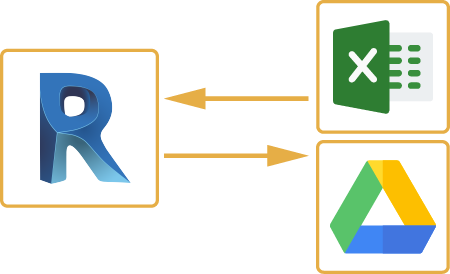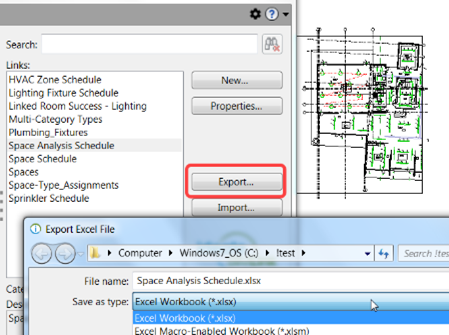Revit Plugins for Unleashing Your Layout Potential
Wiki Article
Understanding the Art of Data Assimilation: How to Seamlessly Import Excel Data Into Revit
In this short article, we will assist you with the procedure of understanding the art of information combination. Obtain prepared to prepare your Excel data effortlessly and follow our step-by-step guide to import documents into Revit. With our finest methods, you'll attain information assimilation success in no time.Recognizing the Importance of Data Integration in Revit
Understanding the importance of information assimilation in Revit is important for seamless importing of Excel documents. When you incorporate information from Excel right into Revit, it enables you to effectively manage and upgrade details throughout the entire job. This assimilation makes certain that your layout and building and construction process is current and precise.By integrating information, you can conveniently import and upgrade specifications, schedules, and also geometry in Revit. This removes the requirement for manual information entrance, saving you time and lowering the danger of mistakes. With Revit's data integration capacities, you can preserve consistency and precision in your project, while additionally enhancing collaboration amongst team participants.

Checking Out the Excel Data Style for Revit Combination

In order to effectively integrate Excel documents right into Revit, it is vital to make sure that the data is formatted correctly. This consists of correctly labeling columns and rows, in addition to structuring the information in a manner that works with Revit's data schema. Revit uses details specifications and categories to arrange data, so it is necessary to straighten the Excel data with these parameters to make certain a smooth assimilation.
Additionally, it is essential to keep in mind that Revit just supports certain data kinds when importing from Excel. These include message, numbers, and dates. Any kind of other information types, such as solutions or conditional formatting, will not be identified by Revit and may trigger issues during the assimilation process.
Preparing Your Excel Information for Seamless Import Into Revit
To guarantee a smooth assimilation process, you'll require to correctly layout and label the columns and rows in your Excel data prior to importing it right into Revit. Due to the fact that it allows Revit to precisely analyze and organize your data, this step is crucial. Begin by analyzing your Excel information and identifying which columns and rows have relevant info for your Revit task. Make certain to label each column with a descriptive and clear header. This will certainly aid you and others easily understand the function of each column and prevent complication throughout the import procedure.Following, ensure that the data in each column is properly formatted. As an example, if you have a like it column for dimensions, make sure that all dimensions are regularly formatted in the same units of measurement. Revit depends on constant format to precisely analyze and import information.
Additionally, it is essential to examine for any kind of vacant cells or variances in your data. Revit may not be able to review or import information from cells that are vacant or include errors. It is recommended to assess your Excel information and clean up any incongruities prior to importing it into Revit.
Step-By-Step Overview to Importing Excel Files Into Revit
As soon as you've correctly formatted and classified your Excel data, you can conveniently published here import it into Revit by following this detailed guide. To start, open Revit and navigate to the "Insert" tab. revit tools.Next, a dialog box will certainly show up, enabling you to tailor the import settings. Below, you can pick the worksheet you want to import, define the variety of cells to import, and pick the suitable devices for your data. When you have actually made your selections, click "OK" to proceed.
Revit will certainly now show a sneak peek of your Excel information. Take a moment to examine the preview and guarantee that every little thing looks appropriate. If required, you can make changes to the import settings by clicking on the "Settings" switch.
Finest Practices for Information Integration Success in Revit
Make sure you adhere to these ideal practices to make sure effective assimilation of data in Revit. First and primary, it is critical to organize your data in Excel before importing it right into Revit. This indicates ensuring consistent naming conventions, appropriate format, and exact information depiction. Next off, take advantage of Revit's integrated devices for data mapping. This will allow you to match the columns in your Excel file with the corresponding specifications in Revit. Bear in mind the systems and information kinds when mapping the information, as any inconsistencies can result in errors in the combination process.One more essential technique is to consistently verify and upgrade your information. Additionally, make usage of data recognition tools within Revit to recognize any type of mistakes or variances in the integrated data.
Lastly, it is suggested to develop a clear operations for information combination. This consists of specifying functions and responsibilities, establishing a communication network between staff member, and developing a regular tempo for information updates and evaluations. By adhering to these best techniques, you can ensure a smooth and successful combination of information in Revit, ultimately enhancing the performance and accuracy of your job.
Verdict
In conclusion, mastering the art of data integration is important for seamless import of Excel files into Revit. Comprehending the significance of data combination in Revit is the very first step towards effective assimilation.When importing information from Excel into Revit, it is essential to comprehend the data format and how it can affect the integration procedure (revit plugins). Revit uses specific parameters and groups to organize data, so it is important to straighten the Excel information with these specifications to guarantee a seamless article assimilation
Be conscious of the information and devices types when mapping the data, as any kind of inconsistencies can lead to errors in the integration procedure.
Furthermore, make use of information recognition tools within Revit to recognize any type of errors or inconsistencies in the incorporated data.

Report this wiki page